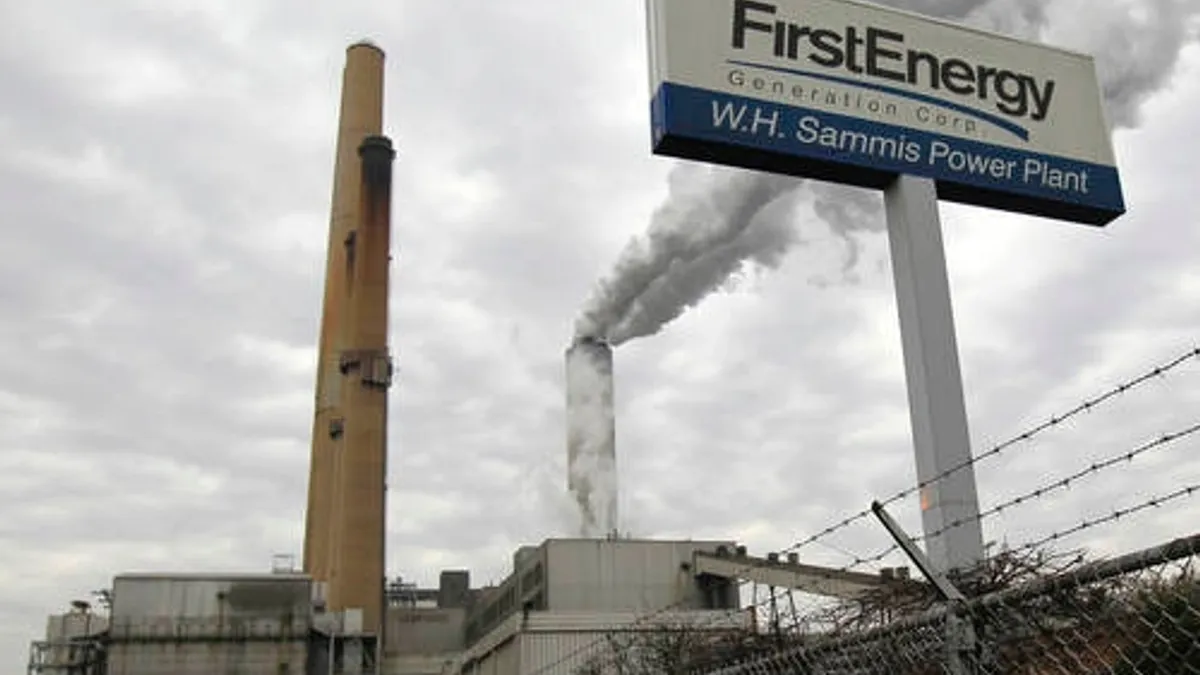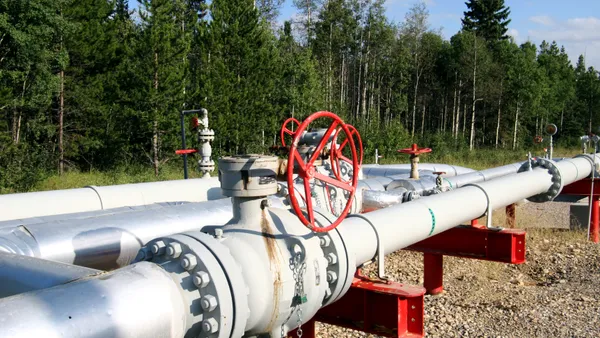Dive Brief:
- FirstEnergy Corp. is navigating the coronavirus pandemic without the liquidity problems some utilities are facing. The Ohio-based company with operations in six states has cash liquidity of $3.5 billion, continued access to capital markets and a well-funded pension plan, CEO Charles Jones told analysts during Friday’s first quarter earnings call.
- FirstEnergy is also insulated over the long term from declines in revenues in at least three of the states where it operates, Jones said. In Ohio and Pennsylvania, FirstEnergy’s companies have the ability to add riders to rates in order to charge all of its customers for what may become uncollectible expenses from unpaid bills during the pandemic. And in Maryland, the Public Service Commission earlier this month issued an order authorizing the company to defer for future recovery "all prudent, incremental COVID-19 related costs."
- FirstEnergy reported first quarter operating earnings of 66 cents per share on revenues of $2.7 billion, compared to first quarter 2019 operating earnings of 67 cents per share on revenues of $2.9 billion.
Dive Insight:
FirstEnergy executives aimed to offer a positive financial picture amid the current climate of economic dislocation and uncertainty.
Before the pandemic affected bond markets, FirstEnergy completed the refinancing of $1.75 billion in corporate debt at a blended rate of 2.9% -- the best utility rates ever seen, Chief Financial Officer Steve Strah said during Friday's earnings call.
Jones assured analysts during the call that the company expects to meet its earnings expectations for the second quarter as well as the full year.
He said FirstEnergy's operating strategy, including its rate structures, "is built for resiliency during this crisis."
The company has implemented a pandemic operating plan developed years ago, directing about 7,000 employees to work from home while organizing its outdoor crews in small "pods" and equipping them with virus protection equipment, including masks and thermometers. The company reports that just six of its nearly 13,000 employees have contracted COVID-19.
The orders from state governors shutting schools, stores and offices beginning in March and urging people to say home may have partially made up for the impact of warmer-than-normal weather on sales during the quarter.
While the warmer weather knocked back residential demand for the quarter by 12.6%, residential consumption since the middle of March appears to have increased by 6%. That increase was measured through smart meters deployed in Pennsylvania, and the company expects a similar percentage increase across its total service territory.
That increase, stemming from stay-at-home orders, is significant because about two-thirds of the company’s base distribution revenues come from residential sales, said Jones. About 20% of the company’s total retail load is on a decoupled rate structure in Ohio, said Jones, meaning the revenues the company collects annually are not affected by reductions in demand.
Commercial and industrial demand was down nearly 13% during the first quarter compared to the four-year-average from 2016 through 2019. But about 80% of commercial rates and 90% of industrial rates consist of customer and demand charges. Those charges are not significantly affected by the decline in power delivered, Jones said.
The company’s long-distance bulk transmission business produced higher revenues in the first quarter compared to the first quarter of 2019, primarily because the company has continued to invest in upgrades, creating a higher rate base. About one-third of the company’s earnings come from the company’s transmission division, which is unaffected by near-term changes in customer demand, Strah said.
"We are very well positioned to manage the impact of the economic slowdown, and we believe our distribution and transmission investments will continue to provide stable and predictable earnings," Jones said.














